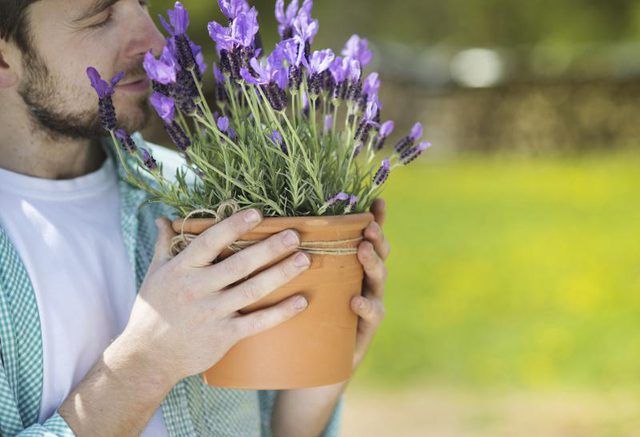Bulbs
Flower Basics
Flower Beds & Specialty Gardens
Flower Garden
Garden Furniture
Garden Gnomes
Garden Seeds
Garden Sheds
Garden Statues
Garden Tools & Supplies
Gardening Basics
Green & Organic
Groundcovers & Vines
Growing Annuals
Growing Basil
Growing Beans
Growing Berries
Growing Blueberries
Growing Cactus
Growing Corn
Growing Cotton
Growing Edibles
Growing Flowers
Growing Garlic
Growing Grapes
Growing Grass
Growing Herbs
Growing Jasmine
Growing Mint
Growing Mushrooms
Orchids
Growing Peanuts
Growing Perennials
Growing Plants
Growing Rosemary
Growing Roses
Growing Strawberries
Growing Sunflowers
Growing Thyme
Growing Tomatoes
Growing Tulips
Growing Vegetables
Herb Basics
Herb Garden
Indoor Growing
Landscaping Basics
Landscaping Patios
Landscaping Plants
Landscaping Shrubs
Landscaping Trees
Landscaping Walks & Pathways
Lawn Basics
Lawn Maintenance
Lawn Mowers
Lawn Ornaments
Lawn Planting
Lawn Tools
Outdoor Growing
Overall Landscape Planning
Pests, Weeds & Problems
Plant Basics
Rock Garden
Rose Garden
Shrubs
Soil
Specialty Gardens
Trees
Vegetable Garden
Yard Maintenance
How to Grow Lavender in a Pot
How to Grow Lavender in a Pot. Not many plants have been honored with a color and fragrance bearing their name, but lavenders (*Lavendula spp.*) makes the list of honorees. The sun-loving herbs -- suitable for U.S. Department of Agriculture plant hardiness zones 5 through 10, depending on variety -- fill the mid-summer garden with fragrance from...

Not many plants have been honored with a color and fragrance bearing their name, but lavenders (Lavendula spp.) makes the list of honorees. The sun-loving herbs -- suitable for U.S. Department of Agriculture plant hardiness zones 5 through 10, depending on variety -- fill the mid-summer garden with fragrance from their silvery leaves and white, rose, lavender-blue or deep-purple blooms. French, or fringed, lavender (Lavandula dentata) grows especially well in pots, and is easily trained as a topiary. Other container-suitable varieties include English lavenders "Munstead " and "Hidcote" (Lavandula angustifolia "Munstead", Lavandula angustifolia "Hidcote").
The Pot
Lavender appreciates a tight fit. Choose a pot with a diameter no more than 1 to 2 inches larger than the plant's rootball. Most lavenders need a pot at least 12 inches in diameter to accommodate their shrubby habits.
As an herb adapted to dry Mediterranean soils, lavender requires a container with drainage holes in its base. Adding a 1- to 2-inch layer of gravel or packing peanuts to the bottom of the pot also improves drainage.
Terra-cotta containers lose moisture more quickly than plastic ones, and reduce the chances of wet soil causing root rot.
The Potting Mix
The best potting mix for lavender is light, slightly alkaline and enhanced with slow-release nutrients. Finding a good commercial soil may be difficult, but making one isn't. Mix equal parts of sterilized garden soil, moistened sphagnum peat moss and perlite in a large container. A 12-inch pot holds about 12 quarts of potting mix.
Adjust the moss and perlite amounts until the mix feels light and fluffy. Fill the container deeply enough that the top 1 inch of the lavender's crown remains exposed, and mix 1 tablespoon of alkalizing dolomitic lime into the potting soil.
After planting the lavender, sprinkle 1/2 cup of 3-0.5-3 alfalfa meal fertilizer over the potting mix and scratch it in. Alfalfa meal supplies nitrogen for healthy leaves and potassium for strong roots.
Mulch and Sun
Surround the lavender's crown with a 2-inch layer of light-reflecting white pebbles to stimulate growth and speed evaporation. Keep the pebbles off the crown; otherwise, moisture accumulating beneath them might cause rot.
Set the pot where it gets at least eight hours of daily sun. In a cool-summer climate, potted lavender benefits from being on or next to a heat-reflecting concrete surface, such as an entryway, walkway or patio.
Ongoing Care
Whenever the potting mix under the pebbles feels dry to the touch, water until liquid runs from the drainage holes. Throughout the growing season, fertilize the lavender with liquid fish emulsion. Mix 1 teaspoon, or the manufacturer's recommended amount, of emulsion in 1 quart of water and apply it weekly.
In a cold-winter climate, move the lavender to an unheated shed, garage or enclosed porch for overwintering. Stop fertilizing, and water only if the potting mix alternately freezes and thaws. In that case, water every two weeks. If it doesn't freeze, don't water.
In spring, new growth emerges at the base of the old, grayish stems. Cut the grayish portions back to slightly above this new growth. Use clean, sharp stem cutters disinfected in between cuts with rubbing alcohol.